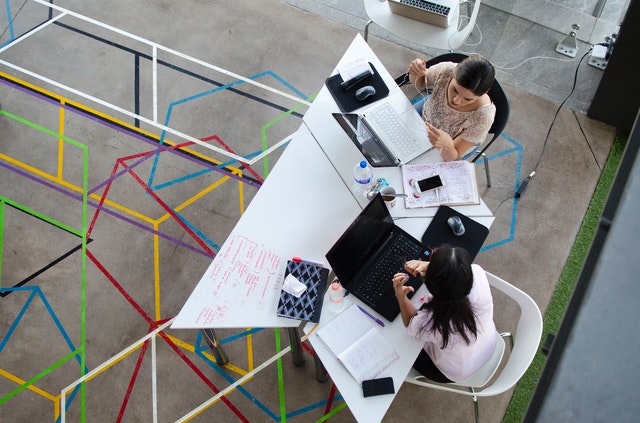As companies look to reduce their office footprints, what does the future of working from home look like?
We started the year with a resurgence of posts on LinkedIn about research findings that highlighted the benefits of individual offices over open-plan workspaces. Skipping forward to August, the language has shifted to some describing offices as a relic of the past.
There’s no doubt that the COVID-19 pandemic has taken the world by surprise. The upheaval of our normal lives has meant that much of the business world has had to adapt at a blistering pace too.
The trend towards flexibility and remote working has continued to grow over the past 15 years with Europe and the US previously leading the way, but in the face of a global pandemic for those who were able to pivot to a virtual workforce, the if/how/when debate quickly evaporated in the face of ‘now’.
It’s clear that this trend is bad for commercial landlords, but there are many positive indicators that working from home can have a number of positive outcomes for employers and employees.
So how can companies, and employees, thrive in this new world of virtual work?
Are people productive working from home?
One of the traditional critiques of virtual work is that employees are slacking off, the alternate being that the ‘busy-ness’ visible in an office equals productiveness.
This pessimism could not be further from the truth, a finding which is not only good news for businesses but for employees too. The research overwhelmingly tells us that people are more productive working from home. In a recent study of 5,000 workers across five countries, workers felt less stressed and got more done than they could in an office environment.
Setting aside the recent experiences of those juggling homeschooling whilst also working from home, workers, in particular, reported increased levels of productivity resulting from no commute, with many also feeling happier because of the additional time they were able to spend with their families or on leisure pursuits.
I’m fortunate to live within walking distance of the OpenLearning office and my daughter’s school, but the shift to all team members working from home has resulted in productivity benefits such as: team members being more refreshed from not having to commute, a more conscious approach to meeting schedules and agendas to avoid teleconference fatigue, and efficiencies for the team members who pre COVID-19 were often out of the office at face-to-face meetings which required factoring in travel time.
Whilst being able to track and measure productivity within businesses is important, combined with culture and organisational theory grounding, the jury is in; when employees are given agency, freedom, and are empowered to do their best work, both their productivity and engagement soars. The change in location as to where that work occurs is secondary to the trust and support bestowed.
Virtual leadership & company culture
When we work from home, it’s true that we can lack the camaraderie of our peers and the presence of our leaders. For some, this is a relief, but in general, the question is whether it is a conducive working arrangement for building a strong and cohesive company culture?
It’s a known fact that when a leader is absent for extended periods, their team suffers, and so does company culture. Considering the full gamut of ‘readiness’ that businesses were in for their staff to move to a work from home model, it’s fair to say that virtual leadership and fostering the company culture requires some adaptations if the increased productivity is to be maintained in the medium to long-term.
For OpenLearning, our approach to leadership during COVID-19 is much akin to our approach to learning – one size does not (and should not) fit all. As such, different techniques have been tried and amended as needed for each team – from daily stand-ups for our Learning Services team who are working on a range of projects at the moment, more regular 1:1’s for our Partnerships team who are generally more social personalities, through to virtual ‘drop-in/coffee’ sessions with the CEO each Wednesday afternoon.
At a whole organisation level, structured monthly town halls have continued as usual, and cross team collaboration has been sustained via a range of tools and processes. Digging deeper though, sharing of common experiences with the team about what our ‘working from home’ reality is, insights into what is working for them, and being more conscientious about the frequency of communication flow or tweaks (or pivots) in strategy are important considerations in maintaining human connections, trust, and loyalty.
Working from home or living at work?
I’m aware of a number of organisations that have asked their employees for input on what a ‘return to office’ world would look like. In general, their findings have been that many would prefer working from home 2-3 days per week. So, if we know that productivity is up and many are up for it to continue longer-term, what’s the downside?
With increased flexibility and the fact that most businesses had to pivot quickly in order to continue operating, the challenge is for companies to help employees in establishing healthy boundaries and techniques for separating work from home in order to avoid burnout.
With recent news that Google and Facebook have updated their communication to employees that they will be able to choose to continue working from home until mid-2021, leaders will need to play an increasingly important role in ensuring that the team knows that being ‘always on’ isn’t a good thing, sick leave isn’t only reserved for when you are too sick to commute to a commercial office, and that taking annual leave shouldn’t just be saved for a date in the future for when travel is an option.
Embrace the new normal
A recent observation is that virtual meetings no longer open with the discussion about how many weeks it’s been since each organisation moved to a work from home policy, symbolising the ‘new normal’ taking effect.
With the trend towards remotely based teams longer-term and slimmed down office spaces accelerated by the pandemic, by embracing increased productivity and promoting greater flexibility, companies can build an even stronger culture than before.
Whilst we may not be catching up in a physical office kitchen or breakout space anytime soon, thankfully with the help of collaboration and connectivity tools available today, many companies are engaging in a genuine dialogue with their employees about what the ‘new normal’ should be.
 About the author of ‘How can we thrive working from home?’
About the author of ‘How can we thrive working from home?’
Cherie Diaz is the Managing Director of Australian operations at OpenLearning Limited (ASX:OLL). Cherie has over 15 years’ experience within education, including roles as the Head of Education Delivery at the Australian Institute of Company Directors And Director of Customer Success at Scentia, where she led the operational teams of four colleges. Cherie is the recipient of multiple individual and business awards for service excellence by the Customer Service Institute of Australia.



 About the author of ‘How can we thrive working from home?’
About the author of ‘How can we thrive working from home?’


